Last year in what was entirely a stroke of good fortune, Rodef Shalom Congregation in Pittsburgh was awarded a Keystone Construction grant from the Pennsylvania Historical & Museum Commission to replace the sewer system that runs under our Henry Hornbostel-designed sanctuary.
Rodef Shalom Congregation
The Rodef Shalom (“Pursuer of Peace”) Congregation can trace its beginnings to the 1850s and today remains western Pennsylvania’s oldest Jewish congregation. The congregation played an integral role in establishing the 1885 Pittsburgh Platform, a pivotal document that shaped American Reform Judaism for over half a century.
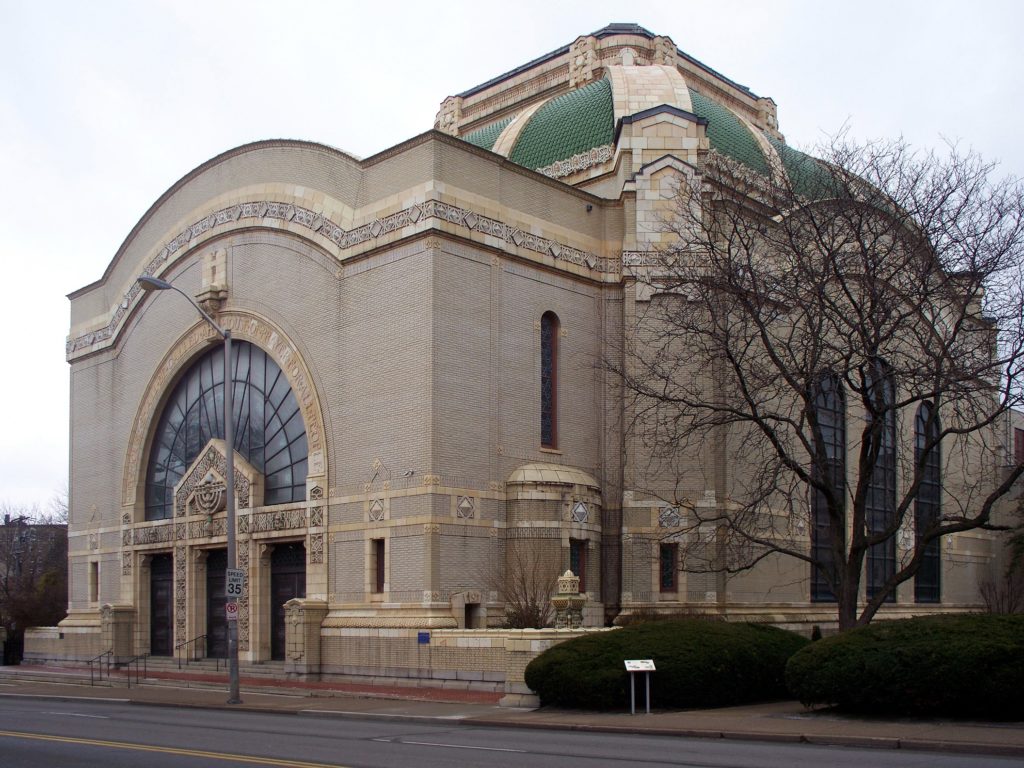
After outgrowing their downtown synagogue at the turn of the 20th century, congregational leaders embarked on a campaign to build their current home on the border of Pittsburgh’s Oakland and Shadyside neighborhoods.
American architect Henry Hornbostel won a competition sponsored by Andrew Carnegie to design the new temple for the Rodef Shalom Congregation in 1906. Hornbostel spent most of his professional career in Pittsburgh after securing the commission for the Carnegie Institute of Technology (now Carnegie Mellon University).
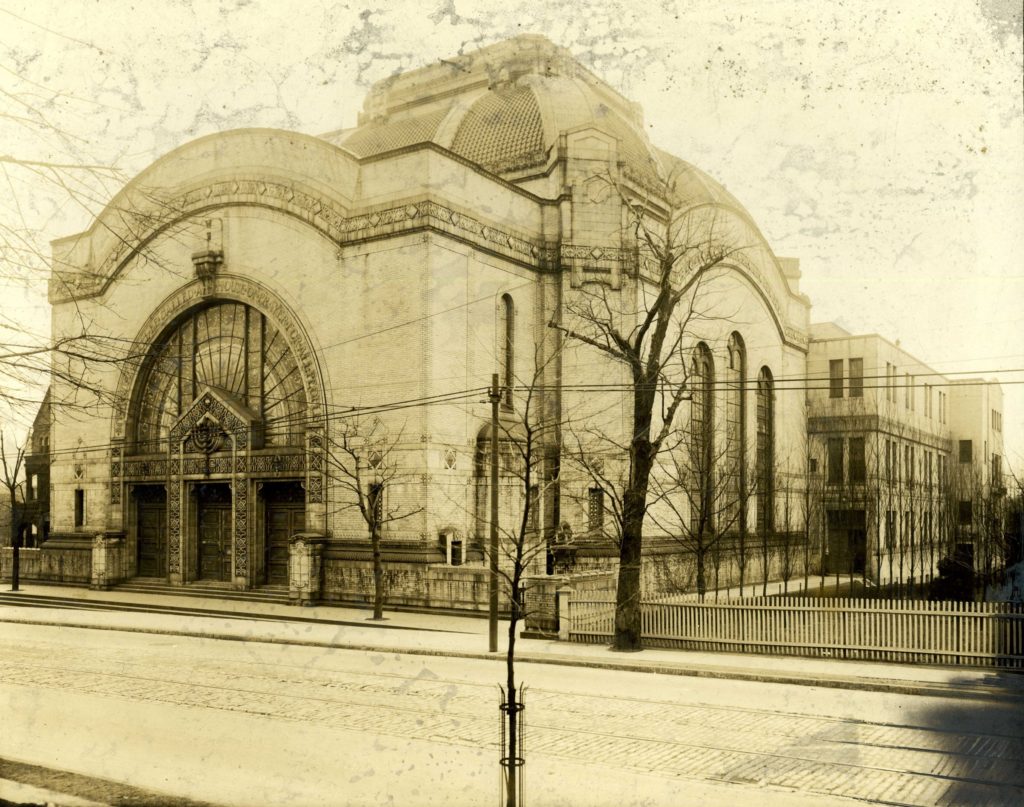
Since Rodef Shalom’s founding, prominent members like the Kaufmanns, the Falks, Pauline Rosenberg, Rabbi Lippman Mayer, and Jonas Salk have had a tremendous impact on the history of Pittsburgh, Pennsylvania, and the nation. The main sanctuary, the oldest building belonging to the congregation, is the architectural manifestation of those progressive beliefs.
Uncommon in Jewish houses of worship at the time, Rodef Shalom’s main sanctuary includes William Willet-designed stained-glass windows with figural representation as well as a massive 1907 Kimball Organ, the largest of its kind at the time. The Guastavino-designed dome, 90 feet in diameter, was one of the largest constructed without structural steel by the company and frequently was featured on their business advertisements.
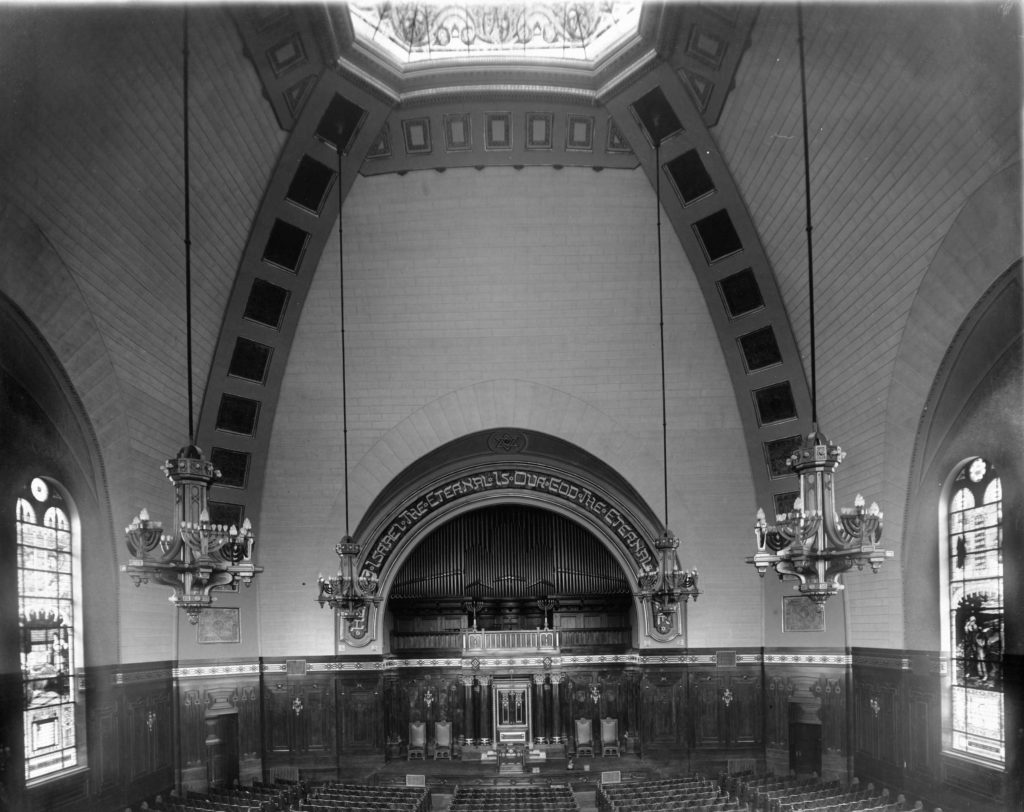
Rodef Shalom (PA-SHARE Resource # 1979RE00108) was designated a Pittsburgh History & Landmarks Foundation Landmark in 1971 and listed in the National Register of Historic Places in 1979.
Water, literally, everywhere
While the building is an absolute gem, neither Hornbostel nor Guastavino foresaw the capacity issues that would arise more than a century later with each passing storm.
Like many urban buildings of the early 20th century, stormwater management is integrated into the building’s design. The storm and sanitary sewer system are hidden under the building and connects with the city’s system. We had concerns about the functionality and condition of the system after four severe sewer failures that appeared to be related to the quantity and frequency of intense rainfall. These ruptures caused flooding of grey water in occupied areas of the basement and the dirt crawl space beneath the sanctuary as well as a more alarming settlement of the foundation.
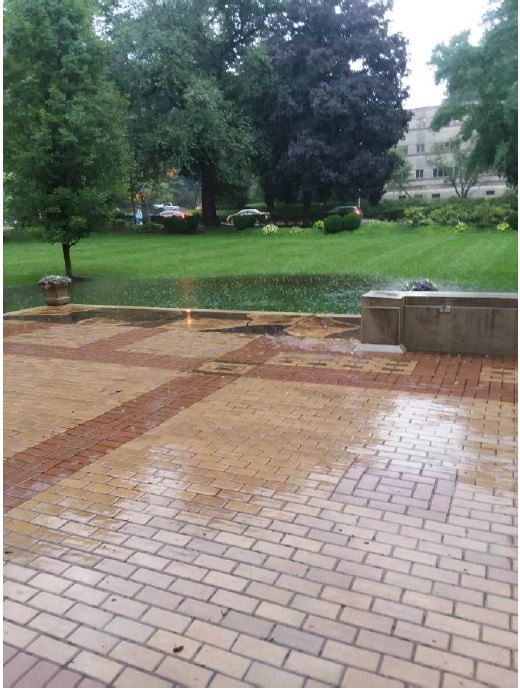
Unfortunately, initial video surveys of the project found the 117-year-old cast iron system corroded internally with deterioration along the longitudinal seams. The problems appeared pervasive throughout the system and not isolated to a single area of the building. The degree of deterioration called for replacement of the full system that would allow for increased capacity due to changing weather patterns in Pittsburgh.
We started the project in earnest in 2020, which gave us just enough time to have everything in place, multiple lines and all, in advance of the spring rains this year. As wonderful as it was to have the project completed, it was upon final inspection that something truly extraordinary happened.
A Treasure Chest
In the darkened recesses of the crawl space under the sanctuary, we came across a rather large turn-of-the-century steamer trunk. In a space comprised of a dirt floor and that houses sewer lines and organ billows, the trunk’s presence was a bit out of place.
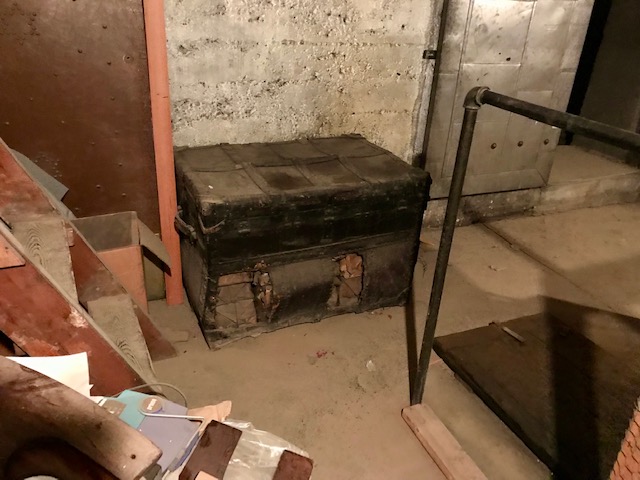
To our surprise, it contained an extraordinary treasure into our past: catalogued copies of nearly every sermon delivered by Rabbi J. Leonard Levy.

A lion of Reform Judaism, Rabbi Levy played an instrumental role not only in the construction of our temple but in shaping the very nature of Reform Judaism in America. Born and raised in London, Rabbi Levy was the youngest ordained rabbi in England upon his appointment of the Bristol synagogue. He would soon after immigrate to America and later became the senior rabbi at Rodef Shalom Congregation in 1901. At Rodef Shalom, Levy became involved in numerous social causes central to the Progressive Era.
All of this was all-the-more evident to us upon examining the content and titles of the steamer trunk’s sermon booklets. “Religion and Social Theories,” “The Reform Pulpit,” and “Peace, Peace, yet there is no Peace,” all provide a glimpse at the formative years of our movement and at the same time called attention to similar issues that occupy us to this day. Several of these sermons were passed on to us but many were lost to time.
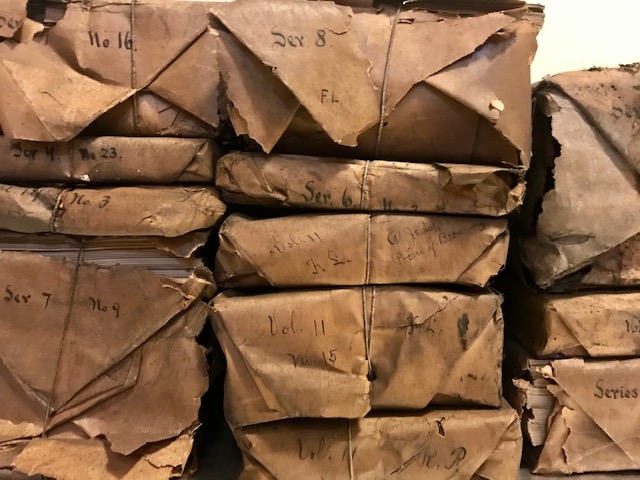

As I write, our archivist is still working through each of the carefully labeled bundles of sermons and lectures, but it has become apparent that several that were previously unknown to us are present in this collection.
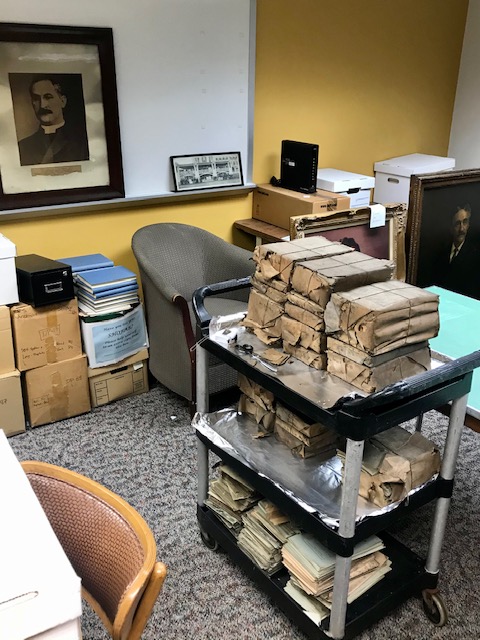
The Mystery
Admittedly, this discovery raised more questions than it answered, in part because of its unusual location.
The trunk’s placement in the basement is such where it is situated immediately underneath our ark (a special tabernacle where the Torah is housed) and the bimah (a platform and podium people stand when reading from the Torah and from where rabbis preach). Theologically within Judaism, there’s no explanation for this placement. Tradition dictates that published material with God’s name on it be buried when no longer in use so clearly here an exception was made.
We think within this exception lies a key to understanding this mystery.
Our congregation’s history is intimately interwoven into the creation and refinement of Reform Judaism and many of our rabbis, like J. Leonard Levy, commanded national attention. So much so that in 1909, upon Rabbi Levy’s invitation, President Taft visited Rodef Shalom and became the first president to speak from the bimah during Shabbat services.
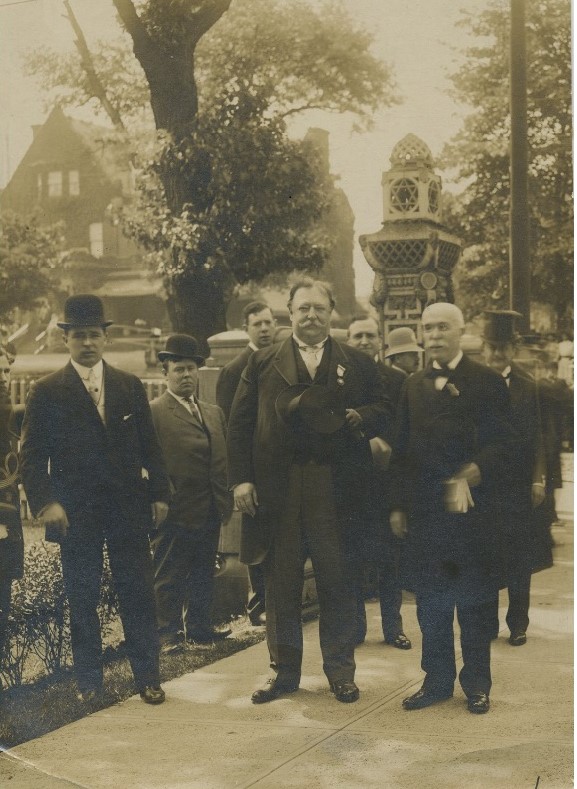
In 1917, at age 51, Rabbi Levy succumbed to pneumonia rather suddenly, leaving the congregation, and many Reform Jews in America, in mourning. To think that since Rabbi Levy’s death, every sermon, every confirmation, every lecture, and speech given at Rodef Shalom Congregation was done in the presence of the body of his work seems a fitting tribute indeed.
We remain incredibly grateful to PHMC for not only helping to fund a project that will help preserve our sanctuary into the future but inadvertently leading us to a much richer understanding of our past.
Matthew W.C. Falcone is President of the Board of Trustees for the Rodef Shalom Congregation and the President of Preservation Pittsburgh, a community-based historic preservation advocacy group dedicated to preserving the region’s historic, architectural, cultural, and environmental heritage.
Comment Policy
PHMC welcomes and encourages topic-related comments on this blog. PHMC reserves the right to remove comments that in PHMC’s discretion do not follow participation guidelines.
Commenters and Comments shall be related to the blog post topic and respectful of others who use this site.
Commenters and Comments shall not: use language that is offensive, inflammatory or provocative (this includes, but is not limited to, using profanity, obscene, or vulgar comments); disparage other commenters or people; condone illegal activity; identify the location of known or suspected archeological sites; post personal information in comments such as addresses, phone numbers, e-mail addresses or other contact details, which may relate to you or other individuals; impersonate or falsely claim to represent a person or an organization; make any commercial endorsement or promotion of any product, service or publication.
If you would like to comment on other topics not related to this blog post but related to PHMC, please fill out the PHMC Contact Us Form.
Lovely article. My family was part of Rodef Shalom congregation for 5 generations.